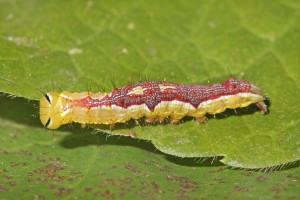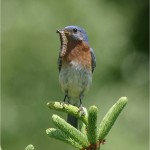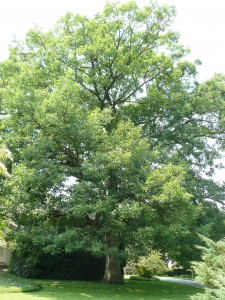By Edie Parnum
dd
Planting an oak is the single most important thing we can do to support wildlife.
As a birder who loves spring migration, I have long noticed that my beloved warblers and other colorful birds prefer the native oak trees. On May mornings, just when their foliage is emerging, I scan the oaks. That’s where I find American Redstarts, Blackburnian Warblers, Scarlet Tanagers and other favorites in their resplendent spring plumage. Only recently have I learned why these birds are in the oaks. I credit Doug Tallamy, Professor of Entomology at the University of Delaware and author of Bringing Nature Home. Oaks, according to Tallamy, support 534 species of lepidoptera (butterfly and moth) caterpillars– more than any other native tree or plant. These caterpillars are not only the primary food source for migrating and breeding birds, but are essential food for baby birds. Other native plants support caterpillars, too, but non-native plants host very few at all.
I’ve always known that acorns are important food for turkeys, woodpeckers, jays, nuthatches, squirrels, chipmunks and other animals. However, birds and other animals are even more dependent on the insects that munch on the oak leaves. According to Tallamy, in addition to myriad lepidoptera species, oaks host aphids, leafhoppers, thrips, and other bugs–all target foods for animals throughout each growing season.
Professional landscapers may try to dissuade you from planting an oak. They’ll tell you it grows too big for the average-sized yard, though most yards are big enough to support a full-sized mature oak.
Perhaps, without any sense of irony, they will say that an oak will grow too slowly. Certainly most oaks will be small for many years, but even young trees will support lots of insects.
While there are many local, native oaks to choose from, the handsome White Oak (Quercus alba) is my personal favorite. From my childhood days in Salem County, NJ, I have fond memories of a nearby magnificent, ancient White Oak. John Fenwick, an early settler, signed a treaty with the Lenape Indians in 1676 under this tree, now approximately 425 years old. This species grows slowly (about a foot per year), but can live for centuries.
Other recommended oak species include Scarlet Oak (Q. coccinea), Chestnut Oak (Q. montana), RedOak (Q. rubra), and Black Oak (Q. velutina). These oaks are available at native plant nurseries and native plants sales. Since oaks have long tap roots, choose a small specimen (4’ or less) or grow your own from an acorn. Because they are adapted to our soils and climate, no fertilizer or other amendments are needed. However, regular watering during the first year helps the root system get established.
An oak is your personal legacy. Your oak can live for centuries. It will host an inestimable number of birds, insects, and other wildlife during your own lifetime and for generations to come.



